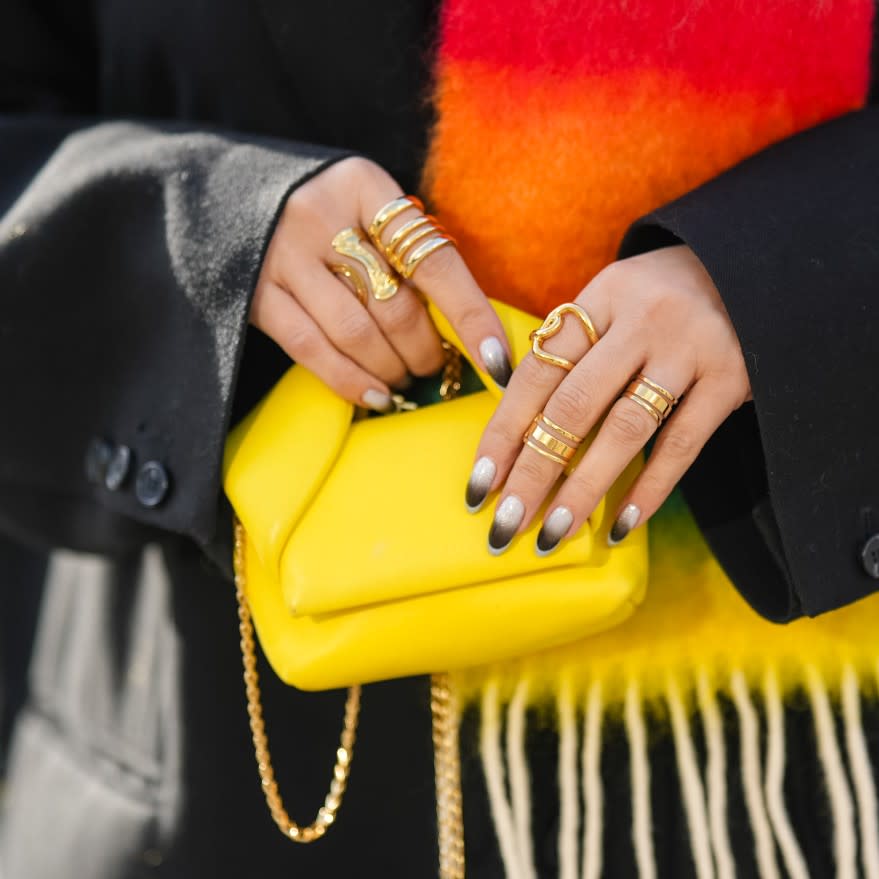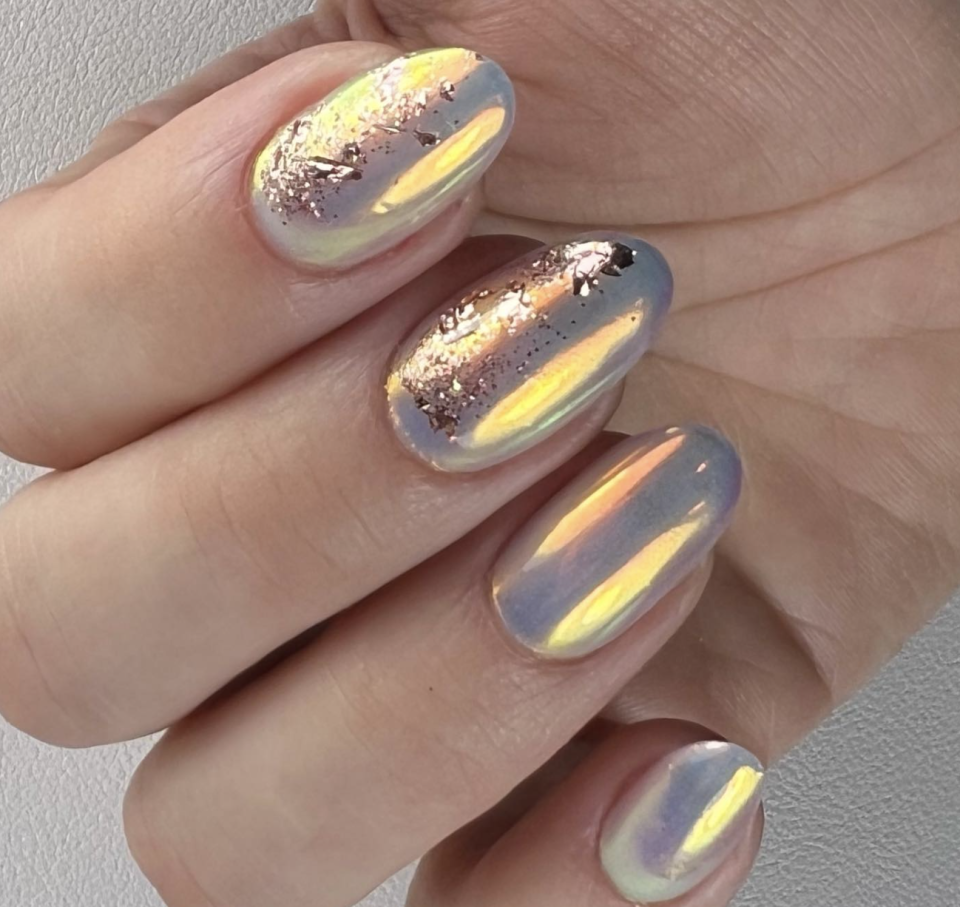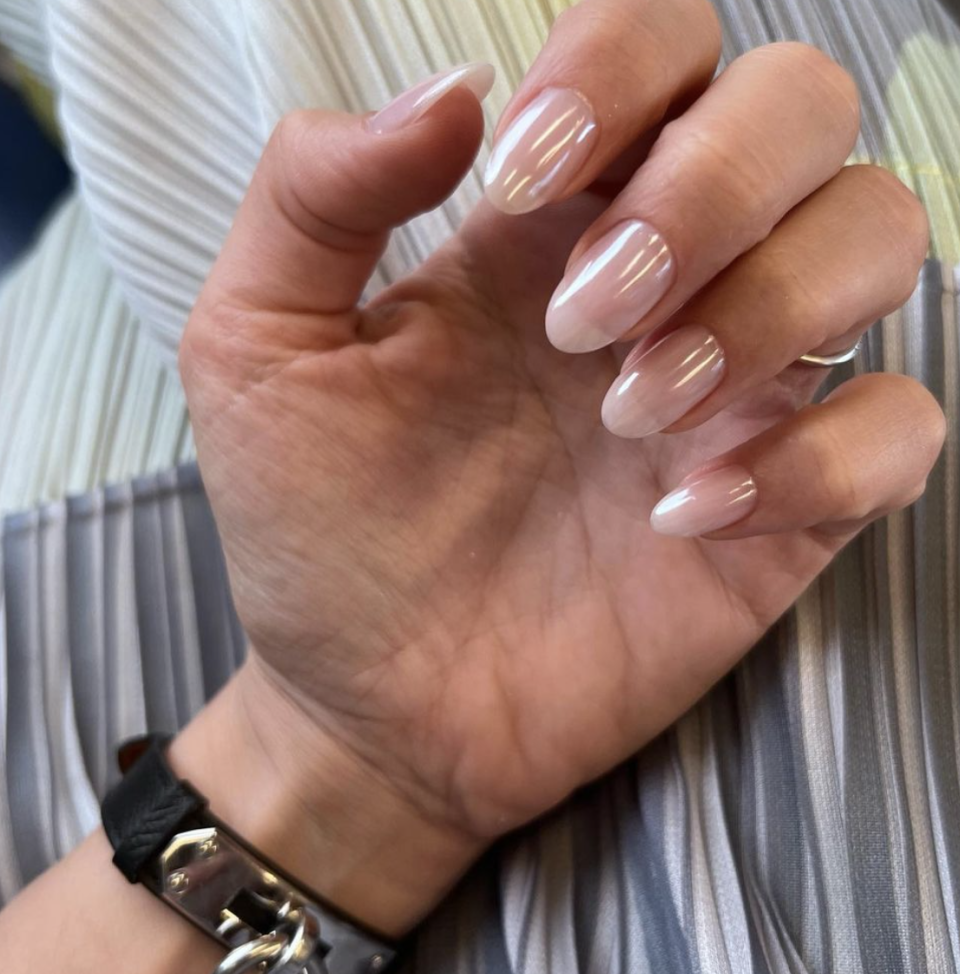Russian Manicures Are Why Everyone’s Nails Suddenly Look Perfect

As someone with cuticles that need constant cutting and more hangnails than the average person, I’m fascinated by the fact that both celebrities and TikTok beauty girls have neither. I’m so fascinated, in fact, that I had to ask the best nail artist in the business exactly how everyone but me was suddenly showing off cuticle-free, perfectly polished nails. The answer: Russian manicures.
According to Dr. Dana Stern, a board-certified dermatologist who specializes in nails, Russian manicures are a form of dry (i.e., no soaking) manicure. Its key features include an emphasis on complete cuticle removal; careful, precise removal of previous gels; and "intricate attention to a pristine polish application." While the technique has been mainstream abroad for quite some time, it’s recently becoming more and more popular stateside—just look to the TikTok stats for proof. "Russian manicure" has accumulated more than 68,000 hashtags on the platform, while Google searches for the term have gone up 75 percent in the last year.
The technique's increasing popularity has come a bit of controversy. Doctors, such as Dr. Stern, emphasize that cuticles are there for a reason—to protect delicate skin from bacteria. Pair that with the fact that certain practitioners are side-swiping formal Russian manicure training (which can take years) in favor of self-teaching, and the risk for infection skyrockets. And yet, the aesthetics of the technique can’t be beat.
For a crash course on Russian manicures—the good and the bad—read ahead. Dr. Stern, along with nail pros specializing in the technique, are breaking down everything you need to know.

Where Did Russian Manicures Come From?
Despite their current surge in popularity, Russian Manicures have a decades-long history. As the name indicates, they originated in Russia in the 1990s. “This technique was created as Russian nail technicians wanted manicures that could withstand the harsh and extremely cold temperatures of their area and provide long-lasting results,” explains nail pro Liana Thomson.
Since then, the technique—or variations of it—has been adopted around Europe. “It's not just a Russian manicure. It’s in the Ukraine. It's in Moldova. It’s essentially the European manicure, as their education is much higher than that in America,” says nail expert Elle Gerstein, who has been practicing the technique for upwards of 10 years.
What Is a Russian Manicure?
A Russian manicure’s primary hallmark is “complete cuticle removal,” explains Thomson. While a traditional manicure will push back or slightly trim cuticles, a Russian manicure employs an electric file to completely remove excess skin around the nail. “Drill-like tools and sometimes scissors are used to remove cuticles and skin surrounding the nail. Abrasive brushes are also sometimes used for intense exfoliation,” adds Dr. Dana.
That clean-up process, paired with meticulous shaping and buffing of the nail itself, creates a more structured appearance around the nail and smoother-looking polish application overall. The goal is to actually create a stronger natural nail, making this particularly appealing for those weak or brittle nails.

What Are the Benefits of a Russian Manicure?
Aside from creating a particularly clean-looking aesthetic, Russian manicures last much longer than traditional gel nails. “The main benefit is that the polish is applied under the proximal nail fold, which allows for the manicure to last longer than a typical manicure,” explains Dr. Dana. While a standard gel manicure lasts between two to three weeks, Thomson notes that a Russian manicure can remain intact for three to five weeks.
Why Is a Russian Manicure Controversial?
A Russian manicure's defining factor is complete cuticle removal—and that’s exactly what makes this technique so controversial; it creates an environment susceptible to infection. “The cuticle is the nail’s natural protective seal. It is what prevents the entry of yeast and even bacteria into the nail unit. If done repetitively, this technique can result in a type of nail infection called chronic paronychia,” explains Dr. Dana. (If you’re noticing puffy, swollen, or pink or red skin, see a doctor.)
She also warns that this type of aggressive exfoliation and cutting around the nail folds can also cause changes in skin pigment, particularly for those who have darker or more melanated skin.

What to Look for in a Russian Manicure Technician
While there will always be some risk factor when removing the entire nail cuticle, a Russian manicure technique is substantially less risky when completed by a well-trained professional. Unfortunately, the current landscape in the U.S. lends itself to self-taught nail techs who have internet certifications. “It is, therefore, extremely important to ensure that the nail technician is highly trained and experienced in performing Russian manicures to minimize the risks associated with cuticle removal,” says Thomson. “Look for accreditation on their website, socials, and in the salon itself.”
You’ll also want to do your own investigation into how your nail tech and the salon deal with sanitation. “You do not want sanitation that is just dipping into barbicide,” says Gerstein, referencing the blue liquid you’ll typically see at a nail salon. “Everything should be hospital-sterile when you’re doing a Russian manicure.” She also encourages clients to ensure the tools being used are disposable—one and done. This is key to preventing the spread of bacteria.
How Long Does a Russian Manicure Take?
Get comfy, because you’ll be sitting in a salon chair for quite some time. “Depending on the skill, a Russian manicure can go anywhere from an hour and a half to four or five hours depending on what you’re getting,” says Gerstein.

How Much Does a Russian Manicure Cost?
While the price will vary depending on how skilled your technician is and where you’re located geographically, you’re likely looking at a manicure that will cost you roughly $70 to $100, which is around double of what a traditional gel manicure costs.
How to Remove a Russian Manicure
“Don’t soak off this manicure,” warns Gerstein. Acetone removal can cause additional damage to your nail. Instead, go back to your nail technician so they can properly remove the special polish with an electric file.
If you're looking to maintain the look of a Russian Manicure for a longer period of time, make sure to keep your cuticle area moisturized. Consider using Julep's Roll With It Cuticle Oil, which is infused with botanical oils and vitamin E to keep the sensitive skin hydrated.


